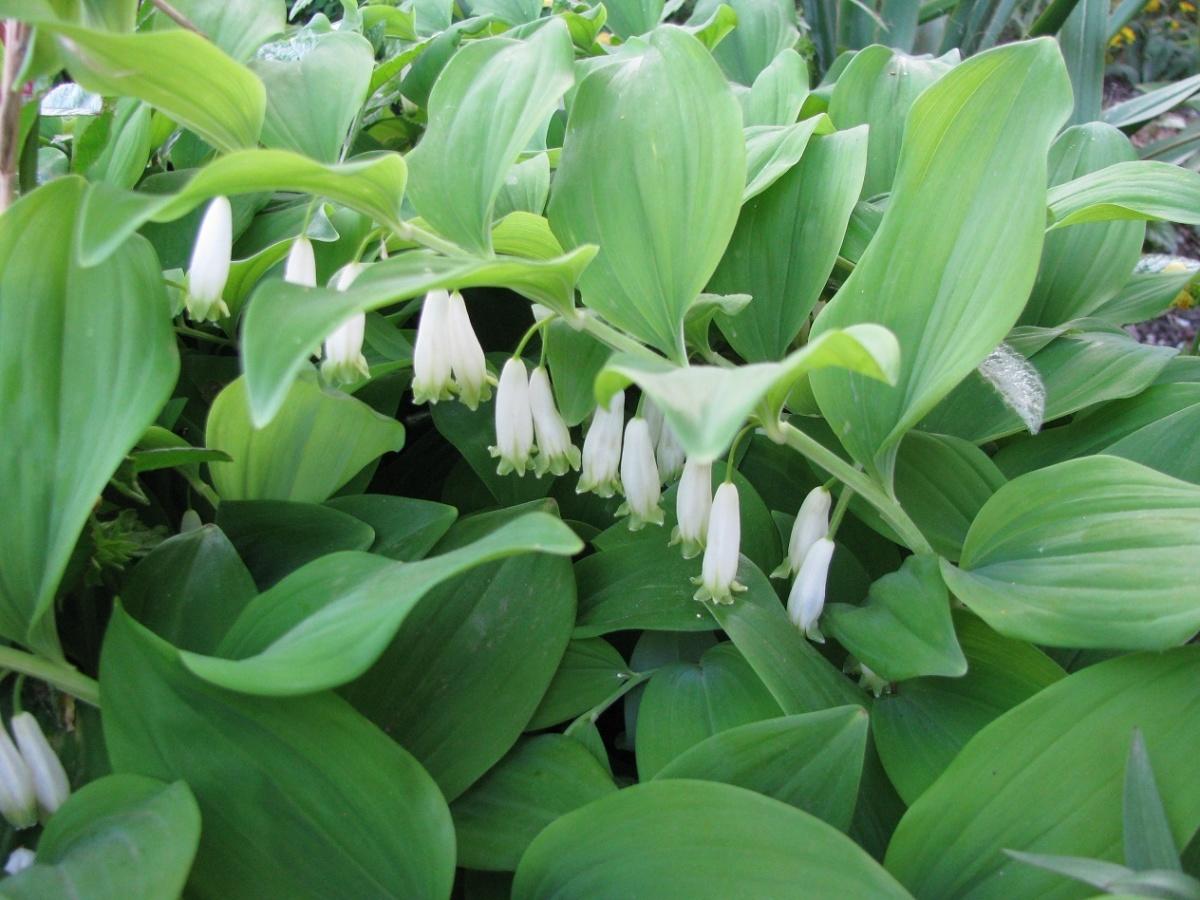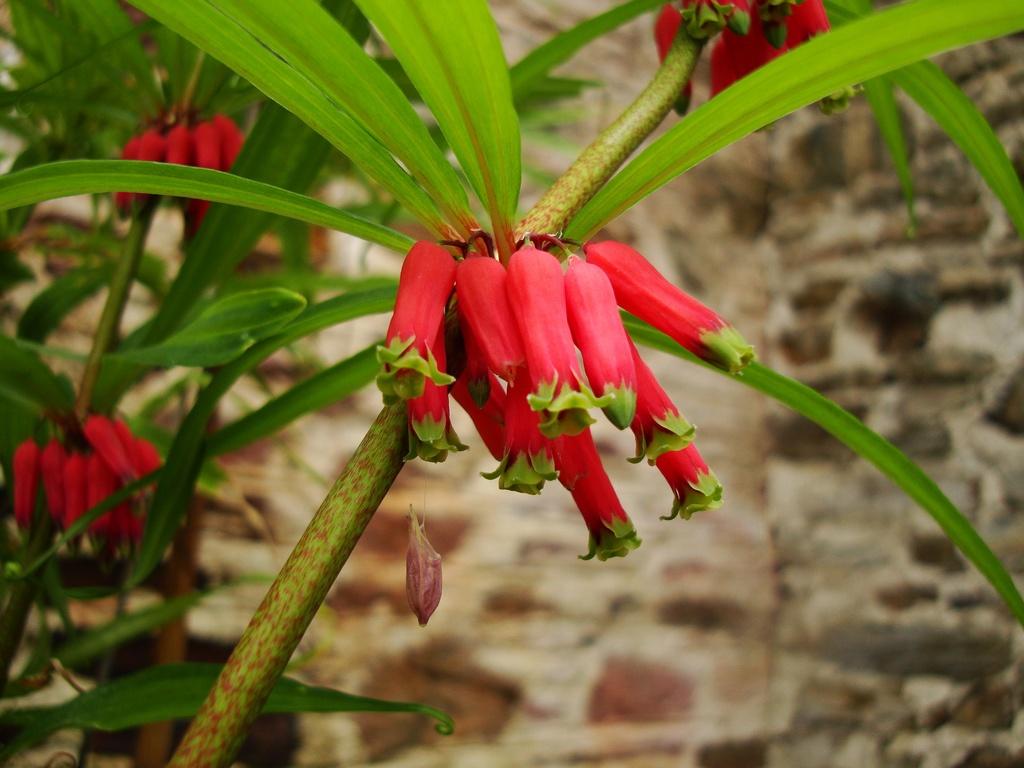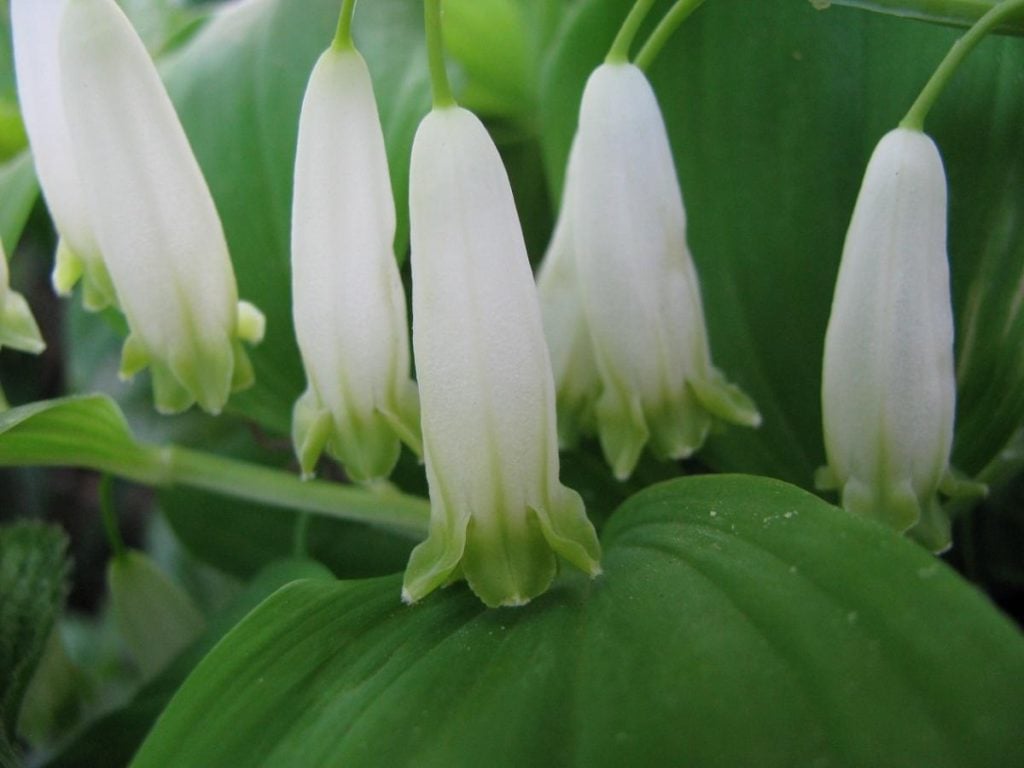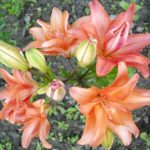When there is not enough farmland, and you want to plant trees, shrubs and allocate space for a vegetable garden, there is very little space for flowers. Areas of beds with complete darkening often remain free, especially under trees and shrubs. This can be easily corrected, because there are a lot of shade-tolerant plants! The first place among them is occupied by the Host and the Polygon.
For a long time my shady areas of flower beds remained almost empty, then I bought two varieties of Hosta and planted Convallaria. But I wasn’t satisfied! I wanted something different! The next acquisition was Polygonatum. I saw her at a friend’s house in a shady garden and was literally fascinated by her beauty. It was late summer, and the flowers on the Solomon’s Seal were missing, but the decorative appearance of its light green foliage was enough to give me my sprouting plant right away. I know that there are many types of the seal of Solomon (Polygonatum), which type belongs to mine, I do not know exactly.
I saw the first flowers in my garden in 1.5 years. There was a lot of joy! These cute white pitchers with a green border. I like that they are good for pruning, they just change the water and cut the ends of the stems.
The vitality of this plant is surprising – even in heavily shaded areas, it grows well and reproduces. There will always be a few weeds around the seal of Solomon, but that won’t last – it kills them, and weeds don’t like to grow in the shade. It is believed that the seal of Solomon is an aggressor and quickly takes over the territory around it. I have it peacefully getting along next to convallaria-the plant is well behaved, transplants are required every 2-3 years. The leaves of the Solomon’s Seal and convallaria have the same shape, but different sizes and colors, and the neighbors perfectly set off and complement each other. I think I’ll plant a fern in their company, and let its lacy leaves adorn my flowerbed in the shade.

The soil in my garden is fertile, so I don’t water the Polygonatum. But when there is no rain in the summer-we have a problem, we have to water constantly. The plants bloom at different times (depending on the region). If you are lucky and the spring is cool, humid, you can enjoy the Polygonatum bloom for 7-10 days longer than usual. When loosening the soil, keep in mind that the rhizomes of Polygonatum are not located deep into the soil, but along the surface of the soil at a depth of 2-3 cm (0.8-1.2 inch).



















